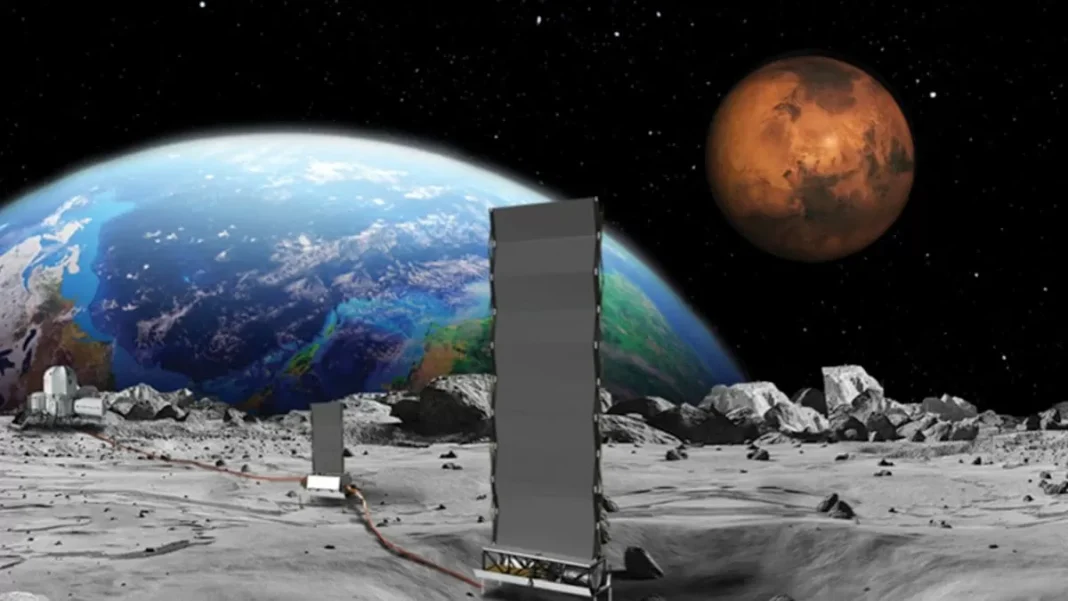NASA has recently announced its plans to accelerate the deployment of a 100-kilowatt nuclear reactor on the Moon by the year 2030. This exciting news comes from the interim head of NASA, Sean Duffy, who believes that the nuclear reactor would play a crucial role in providing steady power during the long lunar nights. Not only that, but it would also aid in securing water-ice resources at the Moon’s south pole. This ambitious plan has sparked a new “moon race” between major space exploration nations like China and Russia, who also have their own plans to deploy lunar reactors by the mid-2030s.
The Moon has always been a source of fascination and wonder for humanity. With its barren and desolate landscape, it has captured the imaginations of scientists and explorers for centuries. And now, with the advancements in technology and space exploration, it has become a tangible destination for humans to explore and utilize for the betterment of our species.
NASA’s plan to deploy a nuclear reactor on the Moon is a significant step towards establishing a sustainable and long-term human presence on our celestial neighbor. The reactor would provide a steady source of power, which is crucial for any human settlement on the Moon. With the ability to withstand the harsh lunar environment and provide uninterrupted power, this reactor would be a game-changer for future lunar missions.
One of the most significant challenges for any human mission to the Moon is the long lunar nights. Lasting for about 14 Earth days, these nights bring extreme cold temperatures and complete darkness, making it almost impossible for solar panels to generate energy. This is where the nuclear reactor comes in, providing a reliable and constant source of power to keep the human settlement running smoothly. This would also eliminate the need for frequent and costly resupply missions, making future missions more sustainable and cost-effective.
But the benefits of having a nuclear reactor on the Moon don’t stop there. It would also play a crucial role in securing water-ice resources at the Moon’s south pole. Water is a valuable resource for any human settlement, and the Moon’s polar regions are believed to have vast deposits of water-ice. With the help of the nuclear reactor, this water can be extracted and utilized for various purposes, such as drinking, farming, and even fuel for spacecraft.
This ambitious plan from NASA has also sparked a new “moon race” between major space exploration nations. China and Russia, two of NASA’s main competitors in the space race, have also announced their plans to deploy lunar reactors by the mid-2030s. This is a clear indication of the importance and potential of having a nuclear reactor on the Moon. It not only showcases the technological capabilities of these nations but also highlights the importance of international collaboration in space exploration.
The “moon race” between these nations is not just about being the first to achieve this feat, but also about pushing the boundaries of human exploration and advancement. It is a race for innovation and progress, and in the end, the entire world will benefit from it.
The deployment of a nuclear reactor on the Moon is a significant milestone in humanity’s quest to explore and utilize space. It opens up endless possibilities for future missions and lays the foundation for a sustainable human presence on the Moon. With the advancements in technology and the enthusiasm of nations to explore and discover, the future of human exploration looks bright.
NASA’s plan to deploy a 100-kilowatt nuclear reactor on the Moon by 2030 is a bold and ambitious move that will pave the way for future missions and collaborations. It is a testament to human ingenuity and our constant drive to explore beyond the boundaries of our planet. As we continue to push the limits of what is possible, the Moon will play a crucial role in our journey towards the stars.
In conclusion, NASA’s plan to deploy a nuclear reactor on the Moon is a significant step towards establishing a sustainable and long-term human presence on our celestial neighbor. It will provide a steady source of power, aid in securing valuable resources, and spark a new era of international collaboration and space exploration. The future is bright for humanity, and the Moon will play a crucial role in shaping it.


